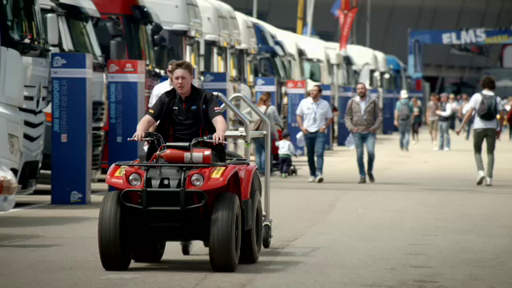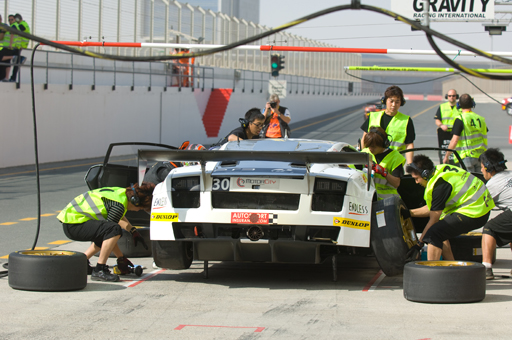2 High octane pressure in a motor racing team
In this section you’ll witness an inexperienced pit-crew being trained to improve their performance by team manager Stewart.
Stewart gives feedback to a member of the pit-crew about how to assist Chris Hoy (the former Olympic cyclist) in driver changeovers. The team were preparing for the Le Mans 24 hours where driver changeovers occur many times during the race. Hoy – who is wearing a helmet – tactfully tries to give his input.
Activity 2 Observing pit stop training
Watch the video and respond to the questions that follow. Be warned that there is some potentially offensive language and behaviour in the video so you should be careful where you watch the video in case it is heard by others.

Transcript: Video 2
The relationship in this instance between Stewart and the pit-crew is perhaps not dissimilar to situations you might have observed elsewhere. Imagine now that you have been asked to mentor Stewart in his coaching of the team. Putting the gender characteristics of this environment to one side, answer these two questions:
- How would you proceed in trying to build a working relationship with Stewart?
- What background information might you ask Stewart about in your early meetings with him?
Discussion
- You could try and establish what he hopes you can achieve together and discuss any shared goals. You may deliberately demonstrate empathetic understanding of his challenges in developing the pit-crew to help establish connection. You may perhaps look for some common ground in terms of either the sport, family or other interests and you might feel it is appropriate to disclose a bit of information about yourself that may contribute to building rapport.
- It would be valuable to know how he got into the sport and the route to his current role. Perhaps some exploration of how he thinks people learn would be useful since his comment ‘I don’t want to hear excuses, I want to see people pushed’ suggests he has a particular approach. It might also be useful to explore his perception about the ‘culture’ of the sport and how this potentially influences his approach. Ideally this should all be undertaken in a non-judgemental way.
An interesting point in any relationship is how much you can change someone’s behaviour. Transformational change is not easy and requires persistence and time. In the next section you will explore the potential of a humanist approach as the basis for mentoring Stewart.

